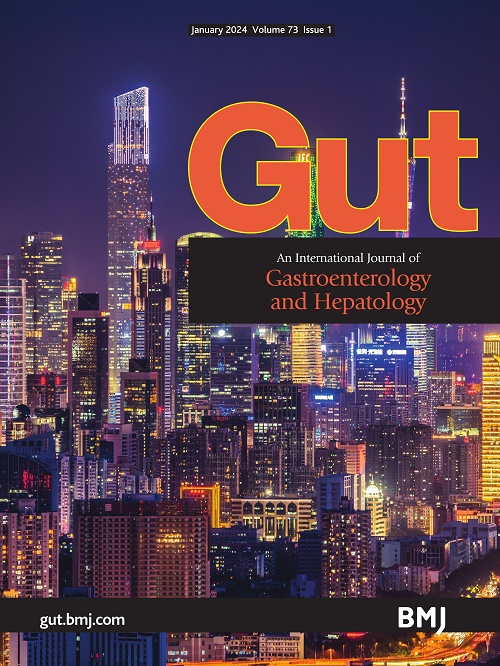AlphaMissense versus laboratory-based pathogenicity prediction of 13 novel missense CPA1 variants from pancreatitis cases
IF 23
1区 医学
Q1 GASTROENTEROLOGY & HEPATOLOGY
引用次数: 0
Abstract
We have read with great interest the study by Wang et al 1 in which the authors evaluated the utility of the AlphaMissense prediction programme2 (https://alphamissense.hegelab.org) in the classification of missense CPA1 variants with respect to pathogenicity in chronic pancreatitis. While the AI-driven prediction performed relatively well, the authors highlighted potential shortcomings that can limit its value in clinical practice. Defining the pathogenic potential of CPA1 variants detected in pancreatitis cases can be challenging because the mechanistic basis of disease risk is unrelated to loss of CPA1 function and seems to be determined by mutation-induced misfolding and the ensuing endoplasmic reticulum (ER) stress.3–5 Recently, we used transiently transfected HEK 293T cells to measure the secretion efficiency and induction of BiP mRNA expression, a marker of ER stress, for 50 missense CPA1 variants from pancreatitis cases and healthy controls.6 We found that the best predictor of pathogenicity was loss of secretion (<10% of wild type) irrespective of BiP levels. This data set can serve as a reference for the assignment of clinical significance of novel CPA1 variants. In the present study, we set out to examine what fraction of novel CPA1 variants detected in real-world genetic testing can be classified as pathogenic and whether AlphaMissense can replace …胰腺炎病例中13个新型错义CPA1变异的AlphaMissense与基于实验室的致病性预测比较
我们怀着极大的兴趣阅读了 Wang 等人1 的研究报告,作者在报告中评估了 AlphaMissense 预测程序2 (https://alphamissense.hegelab.org) 在慢性胰腺炎致病性方面对 CPA1 错义变异进行分类的实用性。虽然人工智能驱动的预测结果相对较好,但作者强调了可能限制其临床实践价值的潜在缺陷。确定在胰腺炎病例中检测到的 CPA1 变异的致病性可能具有挑战性,因为疾病风险的机理基础与 CPA1 功能缺失无关,似乎是由突变诱导的错误折叠和随之而来的内质网(ER)应激决定的3。-最近,我们使用瞬时转染的 HEK 293T 细胞测量了 50 个来自胰腺炎病例和健康对照组的 CPA1 错义变异体的分泌效率和诱导的 BiP mRNA 表达,BiP 是ER 压力的标志物。这组数据可作为确定新型 CPA1 变异临床意义的参考。在本研究中,我们试图研究在真实世界基因检测中检测到的新型 CPA1 变异中,有多大一部分可被归类为致病性,以及 AlphaMissense 是否能取代 CPA1 变异的临床意义。
本文章由计算机程序翻译,如有差异,请以英文原文为准。
求助全文
约1分钟内获得全文
求助全文
来源期刊

Gut
医学-胃肠肝病学
CiteScore
45.70
自引率
2.40%
发文量
284
审稿时长
1.5 months
期刊介绍:
Gut is a renowned international journal specializing in gastroenterology and hepatology, known for its high-quality clinical research covering the alimentary tract, liver, biliary tree, and pancreas. It offers authoritative and current coverage across all aspects of gastroenterology and hepatology, featuring articles on emerging disease mechanisms and innovative diagnostic and therapeutic approaches authored by leading experts.
As the flagship journal of BMJ's gastroenterology portfolio, Gut is accompanied by two companion journals: Frontline Gastroenterology, focusing on education and practice-oriented papers, and BMJ Open Gastroenterology for open access original research.
 求助内容:
求助内容: 应助结果提醒方式:
应助结果提醒方式:


